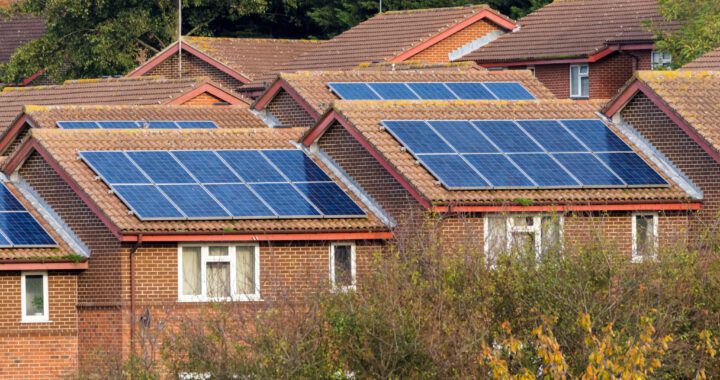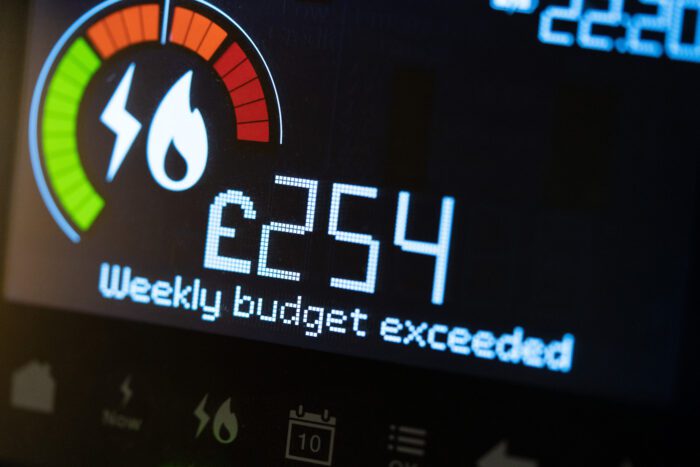Along with the ongoing energy crisis in the UK, there are a number of reasons why solar panel sales have been growing. These reasons include the government’s focus on tackling the cost-of-living crisis, as well as the lower cost of small-scale solar PV systems and their installation.
Increasing number of solar panel sales
Ten years ago, a typical solar panel set-up cost around £20,000 for an average sized home and it would take about a decade to cover the costs of setting up.
However, the cost of solar panels have sunk by more than 60 percent since then, which means it can take between four to five years for the system to recoup costs.During the UK government’s energy security strategy announcement in April, the UK government pledged to strengthen planning rules to support development on non-protected land. This was part of a wider strategy to ramp up solar power capacity fivefold by 2035.
In addition to the solar power part of the plan, the government also announced a plan to cap energy prices to ensure firms do not charge too much for energy. This could be a boon for homeowners looking to save money.
The UK is still largely powered by burning natural gas, but the government is investing in renewables such as hydrogen gas, solar, wind power to supply country’s ever-growing energy needs.
Unfortunately not all UK homes are suitable for Solar
There aren’t many people who have a property that is able to make use of solar energy in particular in the case of an area facing north, or if your home is shaded by trees or other buildings.
“Solar panels are perfect for residential properties with a south, east or west-facing roof, preferably without any shading,” says Mandip Bhamra, the head for renewables and energy at SaveMoneyCutCarbon.
“Depending on how old your house is, you may want to check your roof is structurally sound before fitting the solar panels onto it,” says Brian Davenport, owner of The Solar Centre .
Declining cost of small-scale solar PV systems and their installation
Despite the increased prices for big solar in recent years, costs for small-scale solar PV systems and their installation have continued to decline. During the next few years, solar will be cost competitive with conventional electricity generation, driving continued expansion of the solar market.
Costs for PV-plus-storage systems have continued to decline, according to a report released by the National Renewable Energy Laboratory (NREL). In the first quarter of 2021, installed PV-plus-storage system costs were estimated at USD $0.32/kWh, down from USD $0.35/kWh in the first quarter of 2020.
In addition to solar energy generation, many solar systems also include a battery, which can be used to store surplus power for later use. The report breaks down the costs of PV-plus-storage systems into three different categories: PV panels, equipment, and non-module components.
The amount of power generated by solar panels is contingent on the size and type of the system as well as the home.
A report from Solar Energy UK suggests that homes with a common layout could reduce electric bills by more than PS300 per year. People who have electric heating may be over £900 per year more efficient according to the report however, the majority of UK households still use gas central heating.
If energy prices rise as expected this winter, power produced through solar panels could double, according to Kevin Holland, managing director of The Solar Shed, a Norfolk-based renewable energy company.
A typical solar panel could generate electricity worth £1,200 every year at the current price.
If energy bills increase by an average of 80% in October, and an additional 50% increase in January according to forecasts, the price of electricity generated by a typical system may increase to as high as £3,240.
In addition, if you don’t utilise all the power that you generate, you may transfer that excess energy into the energy firm.
Shifting to onsite green energy generation is a win-win for businesses
Choosing to power your business with renewable energy is a good way to cut costs while showing your customers you care about the environment. But choosing the right technology is not as easy as it sounds. There are several factors to consider. You will also need to consider the cost of installation, maintenance, and operation.
UK government’s focus on tackling the cost-of-living crisis
Jeremy Hunt delivered the Autumn Statement, which set out the government’s plan to stabilise the economy and reduce inflation. He also revealed the UK government would be delivering new nuclear power, which would support the government’s commitment to decarbonise the power system by 2035. In addition, the government would review its Net Zero 2050 targets.
The UK government plans to reform its energy market structure. It is aiming to limit energy suppliers from charging too much for electricity and heating. The government’s aim is to encourage businesses and consumers to use cheaper energy sources.
The UK government has announced that it will introduce an Energy Price Guarantee (EPG) which became active October 1st 2022, limiting the price energy suppliers can charge for electricity and heating. The scheme will apply in Great Britain and Northern Ireland. The government plans to review the market structure after the first six months of implementation.
The government says the EPG will encourage businesses and consumers to reduce their reliance on fossil fuels, which are more expensive than renewable energy. In addition, it will save taxpayers money.


